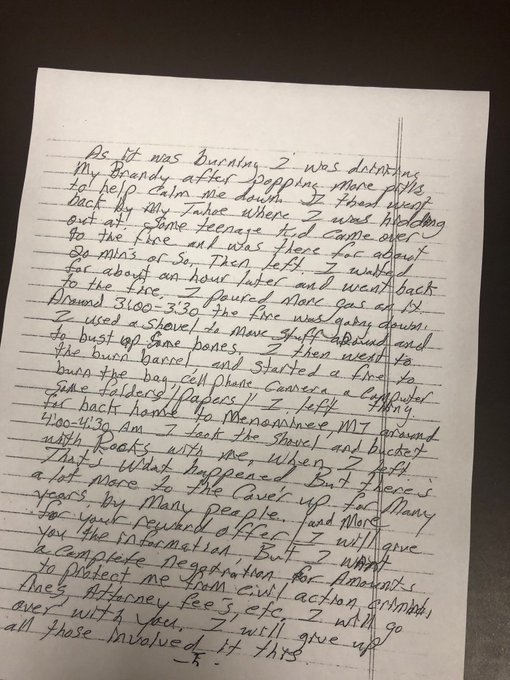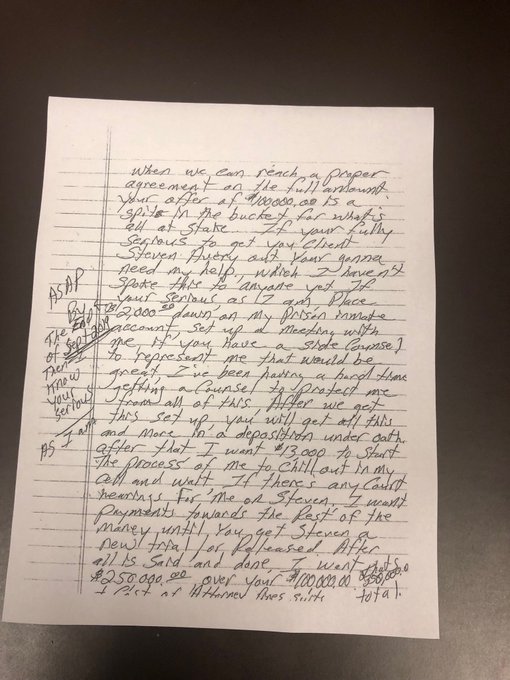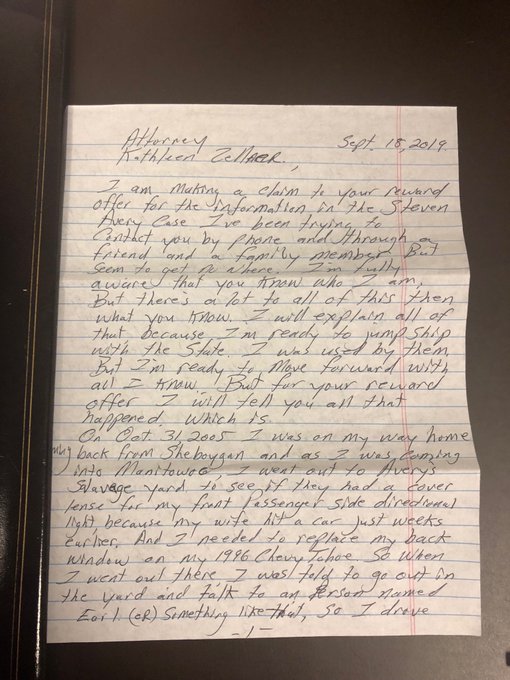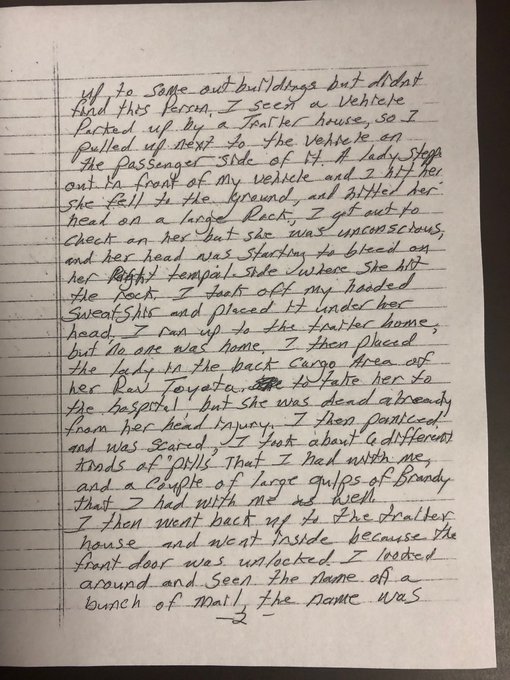
DOC/Manitowoc Co An inmate has confessed to murdering Teresa Halbach, the crime for which Steven Avery stands convicted, a director says.
A convicted murderer from the State of Wisconsin – Joseph Evans Jr. – has confessed to murdering photographer Teresa Halbach, the director of an upcoming documentary on the case told Heavy in a statement. However, Evans previously told a different story about the murder, writing that Steven Avery did it, Heavy has learned.
The alleged confession’s legitimacy hasn’t been verified, including by Avery’s appellate lawyer, who is investigating it. Avery and his nephew, Brendan Dassey, were convicted of the homicide in a case that was featured in Netflix’s Making a Murderer documentary.
Avery’s lawyer, Kathleen Zellner, shared the written confession on Twitter. It identifies the inmate as Evans. In the past, though, Evans alleged that Avery confessed to him.
“Inasmuch as attorney Zellner has released the inmate’s name, I will share it. Joseph W Evans, Jr.,” the director, Shawn Rech, wrote Heavy, shortly after Zellner tweeted out Evans’s supposed confession. “Also: Wisconsin DOJ has reached out and questioned me about teh (sic) confession.” You can read more background information on Evans here. He was convicted of murdering his wife in Marinette County, Wisconsin in 2008.
A spokesman for the Wisconsin Department of Justice released this statement to Heavy: “The Wisconsin Department of Justice has received the new information related to the case. DOJ takes all credible reports seriously, but it’s important to note that this new information directly contradicts information previously provided by the same individual.” According to a 2017 WBAY-TV story, Evans, who was convicted of murdering his wife, previously claimed that “Steven Avery confessed to murdering Teresa Halbach.” In that 2016 letter, Evans allegedly wrote, “he would have gotten away with it, if his idiot nephew of his Brendan would not have spoken to the police like he told him not to…” Evans stated that he met Avery in prison, the station reported. Evans is serving a life term in the Wisconsin prison system for the 2008 homicide conviction, prison records show.
Here’s the new confession, in which Evans does an about face and now claims that he is the killer. However, the details of the case are now very widely known, as they were the subject of a highly publicized trial, not to mention the Netflix show. In the letter to Zellner, Evans writes that he encountered Halbach on the Salvage Yard property owned by Avery’s family, hit and killed her (without explaining a motive), and then planted Avery’s blood at the scene. He provides no corroboration for these claims. Zellner wrote on Twitter: “We received the handwritten confession on Saturday. It is worthless unless it is corroborated.”
“Let’s see. You be the judge of the credibility of this confession,” Zellner wrote.
In the letter to Zellner, Evans said that he wanted a “complete negotiation for amounts to protect me from civil action, criminal fines attorney fees, etc.” He added, “for your reward offer I will give you the information.” He asked Zellner to “place $2000 down on my prison inmate account, set up a meeting with me, if you have a side counsel to represent me that would be great.” He added “after that I want $13000 to start the process…”
He continued: “After all is said and done, I want $250,000 over your $100,000…Keep your panties on and shirt down because I’m not out to screw you.”
Here’s a prison photo of Evans:
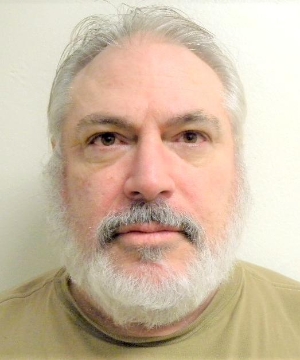
Joseph Evans
Rech, director of Convicting A Murderer, a documentary that explores the case anew, told Heavy in the statement on September 23, 2019 that his team hasn’t confirmed the legitimacy of the confession, which he wrote came from a “notable convicted murderer from Wisconsin.” He didn’t initially name the inmate. He says the confession is on audio. Newsweek first broke the news of the Evans’ “confession.”
“As part of their investigation into the case and coverage of Steven Avery v. Wisconsin, the producers of ‘Convicting A Murderer’ have received a confession to the murder of Teresa Hallbach (sic) by a convicted murderer from the state of Wisconsin,” Rech wrote Heavy. “An audio recording of the confession is being delivered to law enforcement and legal teams for review. Meanwhile, ‘Convicting’ producers will conduct their own investigation into the legitimacy of the confession as they continue production on the 10-part series.”
Rech further told Heavy: “We haven’t confirmed the legitimacy of the confession, but seeing as it was given by a notable convicted murderer from Wisconsin, we feel responsible to deliver any and all possible evidence to law enforcement and legal teams. Having been in production for 20 months, we’ve uncovered an unfathomable amount of information and evidence that is leading us to the truth. Our investigation does not end here.”

Manitowoc CourtsThe Avery junkyard was filled with cars. This compounded the searches in the beginning and later because there was such a large area to look through.
Former DA Ken Kratz, who prosecuted the case, responded to the confession claim on Twitter, writing, “To be clear, like everyone else, this is news to me. I have NO COMMENT until I see the details. #MakingAMurderer.” Reached by Heavy, Kratz reiterated that sentiment and didn’t add further to the statement. Heavy has also reached out for comment from the Wisconsin Department of Justice, as well as the Manitowoc County Sheriff. Sheriff Dan Hartwig wrote Heavy that the Sheriff’s Department is directing all media requests on the story “to the WI Department of Justice Public Information Officer.”
Lawyers for Avery and Dassey have aggressively challenged their convictions, alleging everything from messed-up blood evidence to coercive law enforcement interrogation techniques to blood planting accusations. Both men remain in prison, however. Both Avery and Dassey maintain their innocence; Avery was well-known in Wisconsin even before the Halbach murder because he was exonerated after being wrongfully convicted and serving years in prison for a previous unrelated sexual assault. Others argue that the convictions in the Halbach case were correct and Making a Murderer misleading.
The trials of both Avery and Dassey took place in Wisconsin back in 2007.
Here’s what you need to know:
Avery’s Appellate Lawyer Told Heavy The Firm ‘Received a Handwritten Confession’ But Isn’t Expressing an Opinion on its Validity Yet
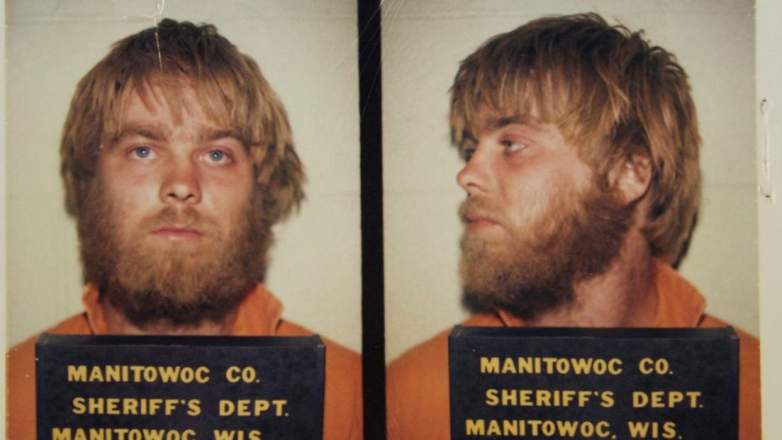
Steven Avery.
When asked about the director’s comments, Zellner initially told Heavy that she received a handwritten confession that she is trying to verify and that her investigators are looking into the background “of this individual.” In early September, Zellner announced a citizen was putting up a $100,000 reward for information leading to the “real killer.”
Zellner initially wrote Heavy a statement in response to a request for comment but didn’t release Evans’ name at first. “We received a handwritten confession today,” she wrote. “Our investigators are checking out all of the details of the statement and the background of this individual. In order for a confession to be valid it has to be corroborated. We are not going to express any opinions about the validity of the confession until we have corroboration of the statements —which is what every well-trained and competent police officer should do.”
The Zellner firm also wrote Heavy, using the same email that Zellner herself had signed with the earlier response, that “the inmates (sic) name is familiar to us but I do not want to release it yet. We were contacted a week ago by the inmate. He mailed the handwritten confession to us before he contacted the production company. The confession occurred solely because of our 100k reward offer and had nothing to do with the production company. When we did not immediately respond to this person he called the production company.” She released the name the next day.
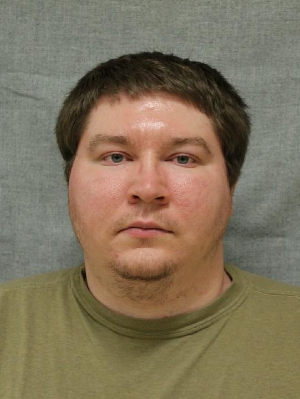
Brendan Dassey
You can read Avery’s Wisconsin state prison system offender sheet here. In 2014, he was moved to Waupun Correctional Institution in Wisconsin. His nephew, Dassey, is also in the Wisconsin prison system. His case has gone through twists and turns in federal court.
The first season of Making a Murderer became a massive Netflix hit and featured behind-the-scenes footage shot of the Avery family and trial by two documentary filmmakers. (You can see crime scene photos from the case here.)
The premise of the show was that Avery, and his nephew Brendan Dassey, might have been set up by a system still upset by Avery’s earlier exoneration for a rape he didn’t commit. Avery had served years in a Wisconsin prison for that attack until DNA evidence showed another man, already incarcerated, and named Gregory Allen, might have done it. Halbach was murdered after Avery was exonerated and released in the earlier case to much cause celebre in Wisconsin. However, there was soon pushback against the series, with some arguing that it unfairly left out or minimized a complex web of evidence against Avery, including blood spatter evidence in Teresa Halbach’s car. In addition, authorities say they found a bullet with Halbach’s DNA on it in Avery’s garage and Teresa’s key in Avery’s bedroom – both pieces of evidence found belatedly. The defense has argued the evidence was planted, which authorities deny.
The case against Dassey was very different; he was a teenager at the time of the murder, and his conviction rested largely on a series of confessions that he gave that defense attorneys have argued were contradictory and coercive in attainment. In other words, Avery was convicted largely on forensics (and circumstantial evidence) but no confession, whereas Dassey was convicted on the basis of the confessions but there was never forensic evidence tying the nephew to the slaying. Halbach’s bone fragments and shards of her personal belongings were unearthed in a burn pit behind Avery’s trailer on the family salvage yard property in Wisconsin.
Avery’s attorneys at trial argued that law enforcement officers planted blood evidence to frame him (they adamantly deny it).
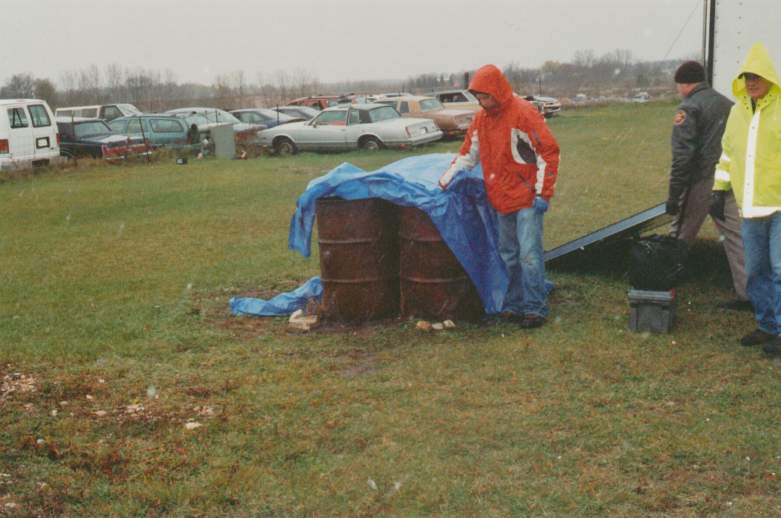
Manitowoc CountyThis is a crime scene photo of one of the burn barrels on the Avery property.
The allegedly cognitively slow Dassey, who was 16 when Halbach was murdered after visiting the family’s Manitowoc County, Wisconsin junkyard to photograph a van for a magazine, saw his conviction overturned by a federal magistrate judge and appellate panel, only to have a full Appeals Court reinstate it and the Supreme Court refuse to hear the case. Avery has not had success with post-conviction motions in the Wisconsin Court System.
In a second season of Making a Murderer, Zellner aggressively attacked the validity of the blood and burn pit evidence, arguing that Halbach might have been killed elsewhere and moved and that there were other suspects who might have done it.
Avery’s blood was located in Teresa Halbach’s car in several places, prosecutors argued, and a state blood pattern expert testified that drops of the blood appeared to have come from an active bleeder. If true, of course, that would mean that the blood was not planted but was dropped at the time.
The victim’s blood was also found inside her vehicle. In addition, a state expert argued that authorities had found what might have been “touch DNA” from Avery on the victim’s hood latch. The defense has also filed motions challenging that evidence.
Rech’s Documentary Is Called ‘Convicting A Murderer’ & Is a Follow Up to ‘Making a Murderer’

When police investigated Halbach’s car, they found both Steven and Teresa’s blood inside the car. Steven’s lawyers argued that the evidence was planted in the car to frame him.
Rech’s documentary Convicting A Murderer is created by Transition Studios. You can see the website on the production here.
A press release from 2018 on the new documentary stated that production had started on “Convicting A Murderer,” described as “a follow-up to Netflix’s sensational 2015 documentary series ‘Making A Murderer’. Acclaimed documentary filmmaker Shawn Rech (A MURDER IN THE PARK, WHITE BOY, WRONG CAT) will direct the 8-episode series.”
The release added: “He’ll also produce along with his long-time partner, Chicago Attorney Andrew Hale. ‘Convicting A Murderer’ will investigate the controversial case built by the State of Wisconsin against Steven Avery for the 2005 murder of Teresa Hallbach (sic), in which police were accused of tampering with crime scenes and planting evidence to manipulate the investigation and implicate Avery of the murder. Avery and his nephew Brendan Dassey are currently serving life sentences.”

Teresa Halbach. Photo from her missing person poster.
The release continues: “Shawn Rech, who has creative control over the series, has exclusive, unprecedented access to District Attorney Ken Kratz, Lead Investigator Tom Fassbender, and other major players in State v. Avery.”
He was quoted then as saying, “When ‘Making A Murderer’ was produced, many on the law enforcement side of the story could not, or would not, participate in the series, which resulted in a one-sided analysis of the case. This docu-series will examine the case and the allegations of police wrongdoing from a broader perspective. It will also share with viewers the traumatic effects of being found guilty and vilified in the court of public opinion.”
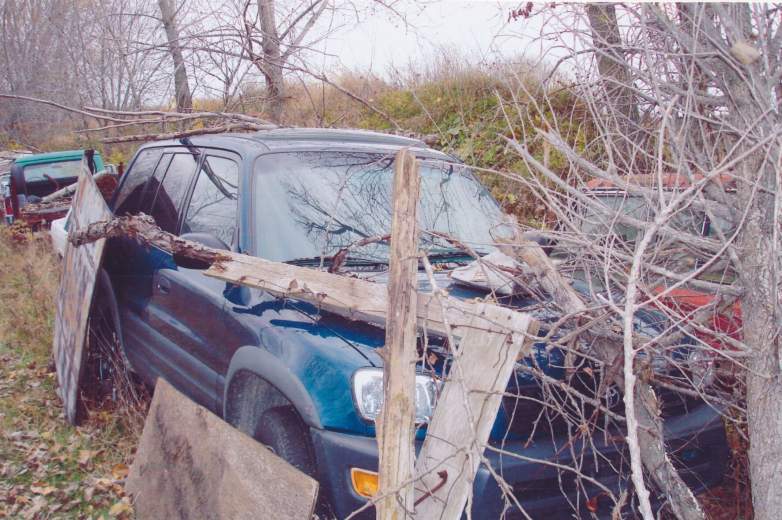
Teresa Halbach’s car on the junkyard property.
Rech’s previous documentary A MURDER IN THE PARK (2014) “presented evidence that led to the release of Alstory Simon, an innocent man wrongfully convicted and imprisoned for a 1982 double homicide in Chicago,” according to that release.
The Simon case also had a link to Wisconsin because Simon was living in Wisconsin when his alleged confession was obtained. According to Cleveland.com, Simon, 66, served more than 15 years in an Illinois prison “for a high-profile crime he did not commit” before the state’s attorney vacated his conviction in 2014. According to The Chicago Tribune, Simon’s confession to a murder on videotape had “unraveled one of the state’s most pivotal wrongful convictions” – that of former death row inmate Anthony Porter. A college journalism professor and class, and private investigator, had reinvestigated the Porter conviction, a confession from Simon was obtained, and Porter was freed.
This post is being updated as more information is learned about the inmate/claims.
READ NEXT: Steven Avery Case Crime Scene Photos.

